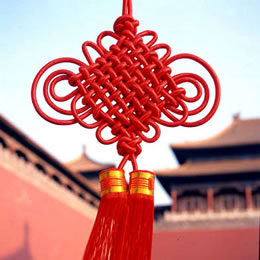Interested in knowing about Chinese knot art? Find out about the origins of this unique form of art and its position in Chinese culture through the changing times.
The country of China is known to be a breeding ground for many great artists and art forms. One of the many unique art forms to have originated from the region is Chinese knot art. Knotting, as it is known is a truly unique art of decorative handicrafts.
The origins of this traditional art form can be traced by to the Tang dynasty. From there onwards it continued to grow in terms of popularity through the Song dynasty and reached its peak in the Ming and Qing dynasties. Chinese knot art also managed to inspire a similar sort of decorative art form in many other Asian cultures through the ages.
The origins of Chinese knot art
Archaeological findings have revealed that the art of decorative knotting existed even in the prehistoric times. The prehistoric people would make use of bone needles for stitching and bodkins to untie the knots. Unfortunately, there are not many examples of Chinese knot art that have managed to survive the effects of weathering because the art form was of a very delicate nature.
Examples of Chinese knot art have been found on bronze vessels that belong to the time period of the Warring States that lasted from 481-221BC. Buddhist carvings from the Northern dynasty period also showcase this unique form of art. Chinese knotting from the Han dynasty can be found on silk scroll paintings.
Chinese knot art also occupied a special place in poetry and literature. The art form was a popular topic of discussion amongst the ruling elite and there have been a number of books written about the Chinese knot art seeking to give it mysterious meanings.
With time the Chinese developed more complicated techniques that resulted in far more intricate design work than was ever practiced before. Before the Qing dynasty the art form was considered to be purely a folklore practice. During this period however Chinese knot art broke away from its traditional shackles and became a widely acceptable form of art throughout China.
The art form continued to rise in terms of popularity until the end of imperial China that came about with the emergence of the Republic of China in 1911 AD. The art form almost faced extinction after this time as China experienced an era of rapid modernization. The cultural revolution of 1976 saw the art form slowly come back to the surface.
It was however the country Taiwan where the art form began to gain strength again. The National Palace Museum founded a separate department of Chinese knotting. It was here that the artifacts that had managed to survive from the Qing dynasty were displayed for the public to see. These efforts attracted world wide attention as a result of which Chinese knot art rose to popularity and is today considered to be one amongst the many wonderful contributions of China in the world of art.





